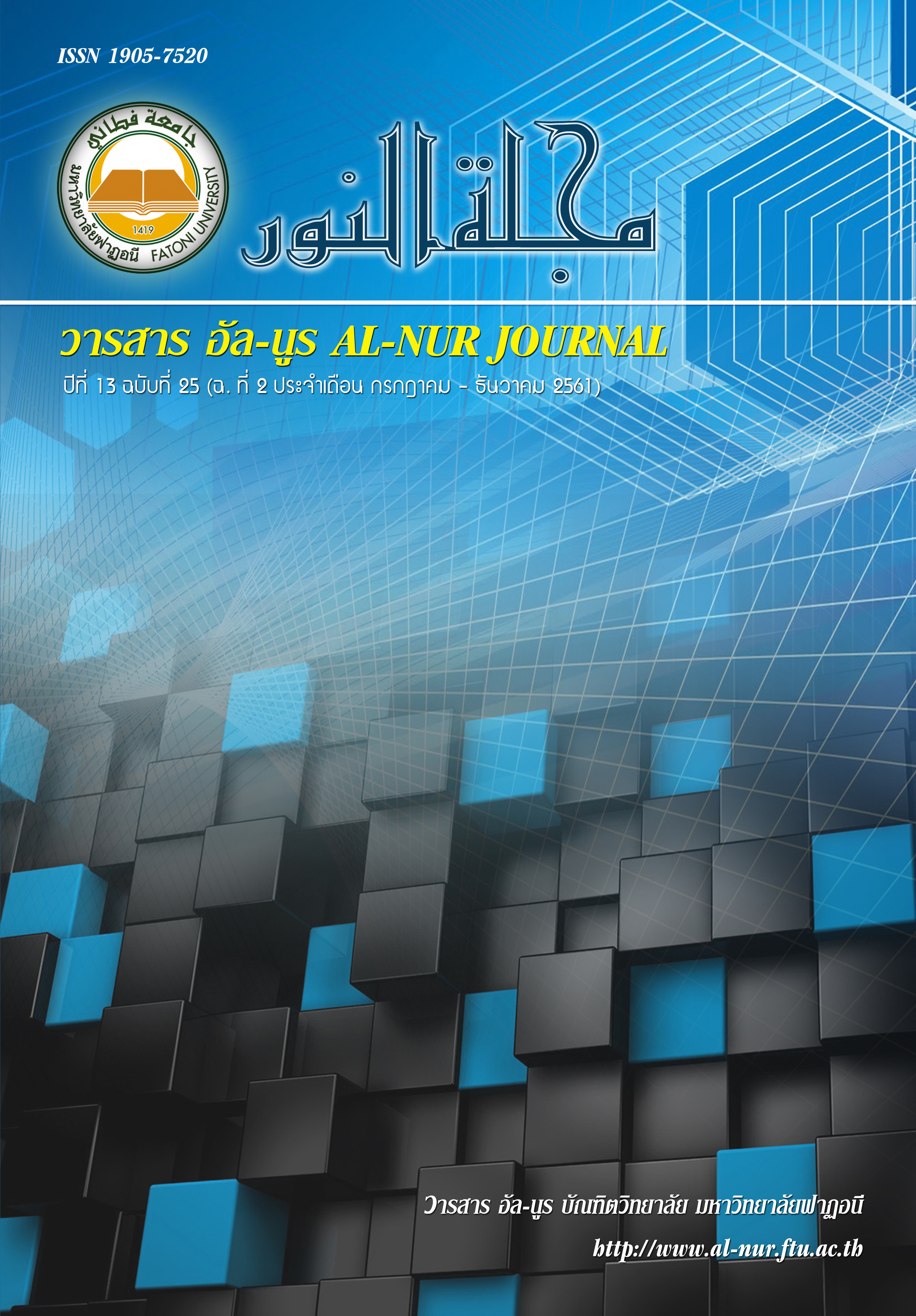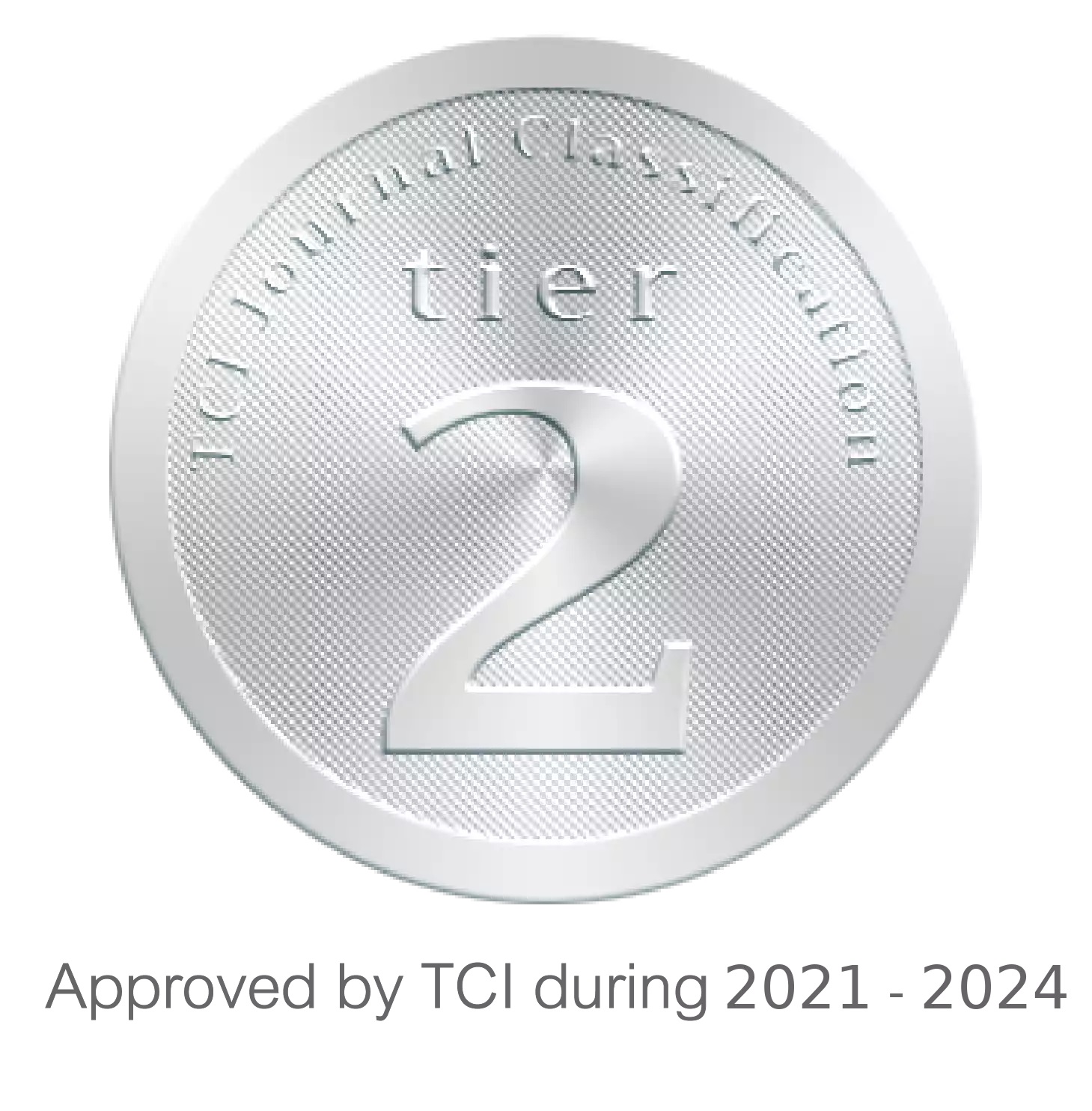ปัจจัยที่มีความสัมพันธ์กับการเกิดโรคในมุสลิมที่ป่วยเป็นวัณโรคปอด
Keywords:
Factors Associated with the Occurrence Disease, Muslims, Pulmonary TuberculosisAbstract
This research is retrospective descriptive study design aimed to describe factors associated with the occurrence of tuberculosis disease (TB) in Muslim patients. The sample was a secondary dataset of TB records among Muslim patients registered at community hospitals in Narathiwat province. Simple random sampling without replacement during the period of January-December 2016 yielded 196 TB Muslim patients. Patients were divided into 2 groups: new vs. recurrent TB. The dataset consisted of the TB record (TB01) according to the Ministry of Public Health form. Content validity of all measurements was examined by 3 experts; data were then analysed using descriptive statistic and Chi-square test.
By using the epidemiological triad concept, the findings revealed that factors associated with the occurrence of TB among Muslims patients were as follows: Host factors: marital status (p=.042), history of having previous disease (p= .017), and educational level (p=.026) were found statistically significant at p< .05; while sex, age, occupational, history of TB treatment, and smoking consumption were not statistically significant (p> .05). Agent Factors: history of drug allergy was found statistically significant (p=.023), while BCG vaccination history was not statistically associated (p > .05). Environmental factors: Neither the residential area, history of TB exposure, the ease of travel (to TB clinics) nor the number of bedroom windows were found statistical significant (p>.05).
References
คำนวณ อึ้งชูศักดิ์. (2559). ระบาดวิทยาเพื่อการบริหารงานสาธารณสุข. กรุงเทพมหานคร. แคนนา กราฟฟิค.
จามรี ธีรตกุลพิศาล. (2554). วัณโรคในเด็ก. ขอนแก่น. คลังนานาวิทยา.
จิรัชยา อินต๊ะบุญมา. (2550). การพัฒนาแนวทางการปฏิบัติการให้บริการผู้ป่วยวัณโรค โรงพยาบาลเชียงดาว. การศึกษาค้นคว้าแบบอิสระปริญญาศึกษาพยาบาลศาสตรมหาบัณฑิต สาขาส่งเสริมสุขภาพ มหาวิทยาลัยเชียงใหม่, เชียงใหม่.
นาฏพธู สงวนวงศ์, และมนะพล กุลประณีต. (บรรณาธิการ). (2556). แนวทางเวชปฏิบัติการรักษาวัณโรคในผู้ใหญ่ พ.ศ. 2555. (พิมพ์ครั้งที่ 2). กรุงเทพมหานคร: องค์การสงเคราะห์ทหารผ่านศึกในพระบรมราชูปถัมภ์.
ปราชญ์ บุณยวงศ์วิโรจน์. (2551). สถานการณ์วัณโรคของประเทศไทยและแนวทางแก้ไข. วารสารวัณโรค โรคทรวงอกและเวชบำบัดวิกฤต, 29, 170–172.
มาหามะ เมาะมูลา, และคณะ. (2552). การบูรณาการองค์ความรู้บทบัญญัติศาสนาอิสลามกับการสร้างเสริมสุขภาพ: โรคเรื้อรัง.สงขลา: สถาบันวิจัยระบบสุขภาพภาคใต้ มหาวิทยาลัยสงขลานครินทร์.
ยูซุฟ นิมะ และสุภัทร ฮากิจสุวรรณ. (2551). การแพทย์และการดูแลผู้ป่วยที่สอดคล้องกับวิถีชีวิตมุสลิม. สงขลา: สถาบันวิจัยระบบสุขภาพภาคใต้ มหาวิทยาลัยสงขลานครินทร์.
สำนักงานสาธารณสุขจังหวัดนราธิวาส. (2559). รายงานผลการดำเนินงานสาธารณสุขประจำปี 2559. นราธิวาส : มปส.
สำนักระบาด กรมควบคุมโรค กระทรวงสาธารณสุข. (2558). ผลการวิเคราะห์ระบบเฝ้าระวัง 5 กลุ่มโรค 5 มิติ. กรุงเทพมหานคร. ฮีซ์ จำกัด.
สำนักวัณโรค กรมควบคุมโรค กระทรวงสาธารณสุข. (2556). แนวทางการดำเนินงานควบคุมวัณโรคแห่งชาติ. กรุงเทพมหานคร: ชุมนุมสหกรณ์การเกษตรแห่งประเทศไทย.
สำนักวัณโรค กรมควบคุมโรค กระทรวงสาธารณสุข. (2556). สถานการณ์และยุทธศาตร์การดำเนินงานวัณโรค 2556. กรุงเทพมหานคร: มปส.
สำนักวัณโรค กรมควบคุมโรค กระทรวงสาธารณสุข. (2557). หลักสูตรการอบรมแนวทางการดำเนินงานควบคุมวัณโรคแห่งชาติ สำหรับเจ้าหน้าที่คลินิกวัณโรคและผู้ประสานงานวัณโรคโรงพยาบาล. กรุงเทพมหานคร: ชุมนุมสหกรณ์การเกษตรแห่งประเทศไทย.
อะเคื้อ อุณหะเลขกะ. (2556). การติดเชื้อในโรงพยาบาล : ระบาดวิทยาและการป้องกัน. เชียงใหม่: มิ่งเมือง.
อิสมาอีลลุตฟี จะปะกียา. (2555). คู่มือผู้ป่วยและการจัดการตามหลักการอิสลาม. นนทบุรี: เฟิร์สออพเซ็ท.
Christian Lienhardt. Et al. (2009). Efficacy and Safety of a 4-Drug Fixed-Dose Combination Regimen Compared With Separate Drug for Treatment of Pulmonary Tuberculosis: The Study C Randomized Controlled Trial. JAMA, 305(14), 1415-1423.
Coker R, Mckee M, Atun R, Dimitrova B, Dodonova E, &Kuzmetsov S,. (2006). Risk factors for pulmonary tuberculosis in Russia: case-control study. BMJ, 332: 85-87.
Global Health and Diplomacy. (2017). Eradicating Tuberculosis: A Challenge To Sustainable Development In Many Muslim Countries. Retrieved from http://www.cghd.org/index.php/global-health-challenges/tb/94-eradicating-tuberculosis-a-challenge-to-sustainable-development-in-many-muslim-countries
Lin HH, Ezzati M, Chang HY, Murray M. (2009). Association between tobacco smoking and active Tuberculosis In Taiwan. Am J Respir Crit Care Med; 180: 475-480.
World Health Organization. (2016). Global Tuberculosis report 2016. Switzerland. World Health Organization



